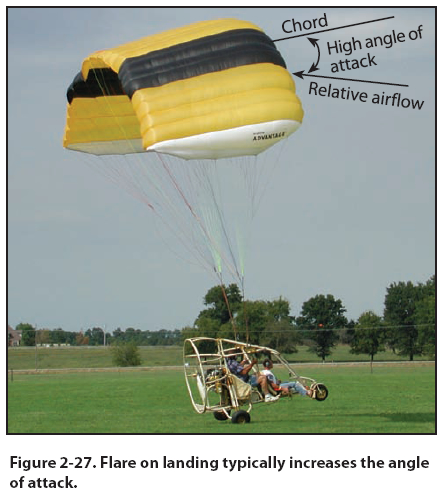Chapter 2 - Aerodynamics of Flight
Flaring Increases Angle of Attack
The flare (pulling down the trailing edges of the
wing—and thus lowering the trailing edge) increases
the angle of attack. [Figure 2-27] In a flare, the trailing
edges of the wing are pulled down (usually, as
both foot steering controls are pushed forward). This
is similar to lowering the flaps on an airplane: lift is
increased, drag is increased, and for a PPC, the angle
of attack is increased. The result is that the higher drag
wing slows down and thus the wing moves backward
relative to the cart. So as the total weight of the pendulum (the cart and occupants) moves forward of the
wing, the angle of attack increases, generating more
lift and more drag. The pendulum is the weight of the
CG under the wing which swings forward for this
transient situation due to pendulum effect.

Note that flare provides a temporary large increase in
the angle of attack (AOA) until the pendulum swings
back underneath the wing. This action thus returns the
wing to the normal stable flight configuration — the
cart (the total weight of the pendulum) under the center
of the wing. Therefore, a flare will only temporarily
add an increase to lift and drag. Once the pendulum
swings back down, the drag of the wing, and therefore
the reduced airspeed, will continue until the flare is
released.
|

